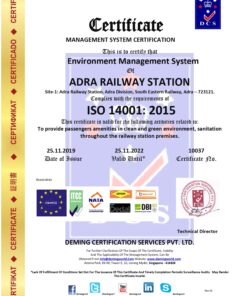Sale!
ISO 15189: Quality Management System For Pathology Laboratory
Original price was: ₹55,000.00.₹49,990.00Current price is: ₹49,990.00.
ISO 15189 is an international standard that specifies requirements for the competence and quality management systems of medical laboratories. It’s specifically designed for laboratories in the field of medical testing, including pathology, clinical chemistry, hematology, and microbiology, among others.
Here are some key components and requirements of ISO 15189 for a pathology laboratory:
### Management Requirements:
1. **Management Commitment**: Top management must demonstrate commitment to the development and implementation of the quality management system (QMS).
2. **Quality Policy**: A documented quality policy that aligns with the laboratory’s objectives and regulatory requirements.
3. **Management Representative**: Appointing a management representative responsible for ensuring that the QMS is established, implemented, and maintained.
4. **Document Control**: Procedures for creating, approving, and updating documents related to the QMS.
### Technical Requirements:
1. **Personnel Competence**: Ensuring that all laboratory personnel are competent to perform their tasks through appropriate education, training, and experience.
2. **Equipment**: Calibration, maintenance, and validation of all equipment used in the laboratory.
3. **Test Methods**: Validation and verification of test methods to ensure accuracy, precision, and reliability.
4. **Sample Handling and Management**: Procedures for sample collection, transportation, storage, and disposal to prevent contamination and ensure integrity.
5. **Quality Control**: Implementation of quality control procedures to monitor the accuracy and reliability of test results.
6. **External Quality Assessment**: Participation in external proficiency testing programs to benchmark the laboratory’s performance against other labs.
### Pre-examination, Examination, and Post-examination Processes:
1. **Sample Identification**: Ensuring accurate and traceable sample identification throughout the testing process.
2. **Analytical Procedures**: Standardized and validated analytical procedures to ensure consistent and reliable results.
3. **Result Reporting**: Procedures for result validation, interpretation, and timely reporting to clinicians or patients.
4. **Non-conforming Results**: Handling of non-conforming results and implementing corrective actions when necessary.
### Management Review:
Regular management reviews of the QMS to ensure its continuing suitability, adequacy, and effectiveness.
### Continuous Improvement:
Implementation of processes for continual improvement of the QMS based on feedback, audit findings, and performance indicators.
### Documentation and Record Keeping:
Maintaining comprehensive documentation and records of all activities, procedures, and results in accordance with regulatory requirements.
### Audit and Assessment:
Internal and external audits to assess compliance with ISO 15189 requirements and identify areas for improvement.
### Training and Development:
Ongoing training and development programs for laboratory personnel to keep them updated with the latest techniques, technologies, and regulatory requirements.
By implementing ISO 15189, a pathology laboratory can ensure the quality, accuracy, and reliability of its testing services, thereby enhancing patient safety and satisfaction, and building trust among clinicians and other stakeholders.









Reviews
There are no reviews yet.